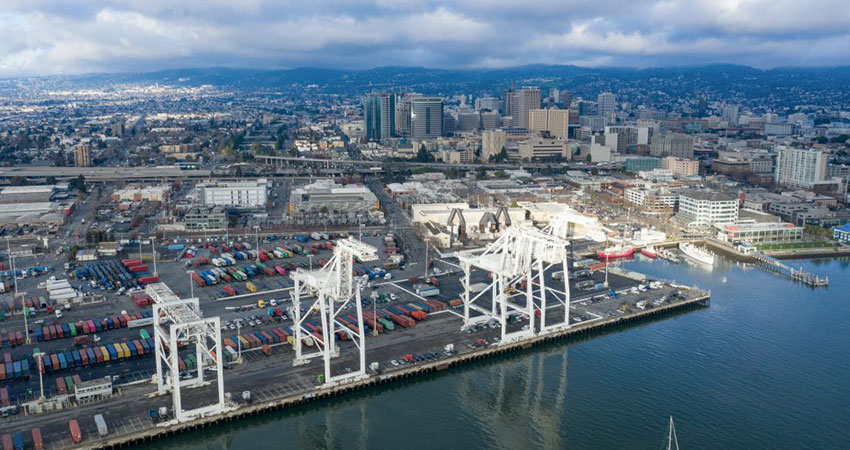In 2020, every consumer who had been the beneficiary of a mysterious apparatus called the supply chain to magically whisk goods to their door suddenly became aware it existed. In 2022, supply chain doings still dominated headlines as shippers, carriers and service providers continued to grapple with myriad issues.
After the massive supply chain logjams of 2021, with shippers of all stripes over-ordering to hedge against delays and bulk up inventory, 2022 has seen port congestion ease as retailers worked feverishly to sell through bloated stocks through heavy discounting. But issues loom on the horizon for 2023.
Ports and Rail Bear Watching
According to the Global Port Tracker from the National Retail Federation and Hackett Associates, monthly retail imports to the U.S., measured in twenty-foot equivalent units (TEUs) has fallen every month since July compared to 2021, after steadily rising during the first half of the year. But concerns remain over the potential for a crippling rail strike in 2023 as federal mediation has yet to produce an agreement, as well as the threat of a Teamsters strike when their UPS contract expires in June. And dockworker labor issues continue to simmer, months after terminal blockages in Oakland were resolved.
“The ports worry me,” said Dave Marcott, SVP of Cross-Industry/Cross-Border and Technology at Kantar Consulting. “There are eight different players, and everyone hate each other’s guts, all of whom can take something off the table. The East coast ports have been boosting capacity for the last 10 years, which is good. But the problem is, everything east of the Mississippi has to be no higher than 15 feet to clear rail tunnels. So, there are all types of chokepoints in the East, limiting the amount of freight that can go west. And trains move twice as much stuff as trucks.”
Inventory Issues Still Being Worked Through
The efforts of major retailers to address inventory levels saw mixed results toward the end of the year, with Walmart and Nike seeing some progress while others like Target and Amazon were more challenged.
As consumer demand shrank amid inflation and inventories filled, the outlook for warehouse space was pulled back in response. Commercial real estate broker CBRE predicts leasing activity in the previously white-hot industrial and logistics sector will decline by 10% to 15% next year, with a decrease in construction starts. Still, leasing activity will see positive net absorption for the 13th straight year, with a tight vacancy rate increasing slightly but remaining below its 10-year average.
Some major retailers with vast resources in supply chain, logistics and fulfillment have seized the opportunity to monetize their networks. In 2022, Gap Inc. and American Eagle Outfitters created separate units focused on service offerings for other retailers, including fulfillment and delivery. The prior year, Walmart launched same-day delivery service GoLocal, with Home Depot as its first customer; it surpassed 1 million deliveries in Q2 of 2022.
Carriers Seeing Volume Decline
Among the major carriers, FedEx saw one contractor uprising evaporate and a new group take its place, put together a long-overdue plan to consolidate operations across business units, and continued to struggle with falling volumes. UPS had a better year, with profitable quarters despite also seeing volumes drop, while stepping up same-day offerings through another acquisition. Both brown and purple announced record general rate increases of 6.9% for 2023, to the chagrin of shippers.
The U.S. Postal Service most recently upgraded its EV plans in the face of intense federal pressure, and continued to report difficult quarters as Postmaster General Louis DeJoy works to implement a 10-year improvement plan, including a major network overhaul.
One interesting development this year was the sudden departure of Dave Clark in early June as head of worldwide consumer business for Amazon, after more than two decades. It was followed a week later by news Clark had been named co-CEO of supply chain and freight forwarding company Flexport. Clark’s departure caused a stir, coming in the wake of Amazon’s extreme infrastructure overbuild in response to pandemic demand, causing billions in losses in 2022. The company is in the process of exiting a good portion of its physical assets.
Supply Chain Investment Shrinks; Deals Still Happening
In 2021, the heightened spotlight on supply chain and logistics providers led to a huge increase in investment, but that has fallen off this year as conditions have eased, per Insider. Still, deals were happening. Flexe, which matches excess warehousing, fulfillment and logistics capacity with shipper needs, reached unicorn status in July with a $119 million Series D round. Clients include Ace Hardware, BJ’s Wholesale Club, Ralph Lauren, Staples and Walmart.
On a smaller scale, Canadian supply chain technology company GoBolt raised $75 million CAD in financing ($54.9 million U.S.), bringing total funding to $222.5 million CAD ($186 million U.S.), while cloud-based food supply chain tech startup Crisp raised $35 million, for a total of $61 million.
Interest in the rising value of supply chain assets also led to some M&A activity, none bigger than warehouse giant Prologis acquiring smaller competitor Duke Realty for $26 billion in June. This gave Prologis an additional 153 million square feet of active space plus another 11 million square feet under development in 19 markets. Smaller deals included German logistics giant Korber acquiring order management and freight audit assets from enVista in July, and Canadian SaaS logistics provider Descartes purchasing customs filing solutions provider NetCHB for $40 million in February.

